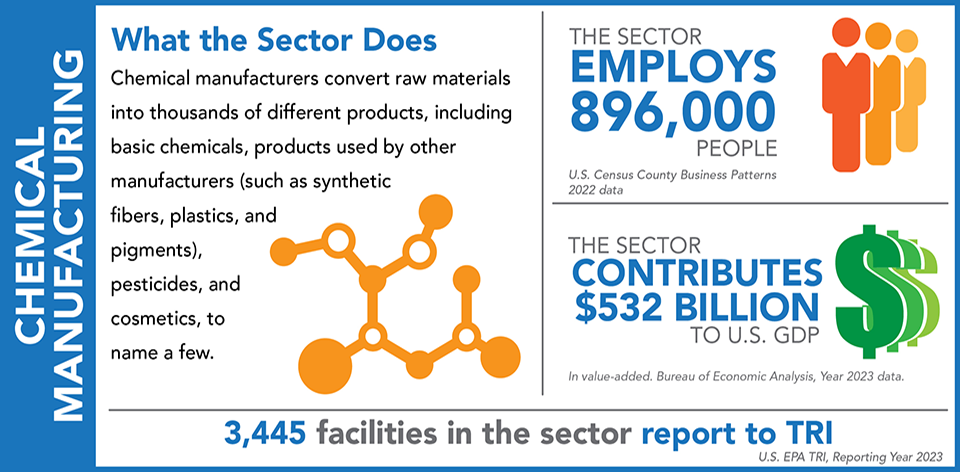Chemical Manufacturing
This section examines how TRI chemical wastes are managed in the chemical manufacturing sector (facilities reporting their primary NAICS code as 325).

This map shows the locations of the chemical manufacturing facilities that reported to TRI for 2023, sized by their releases. Click on a facility for details on its TRI reporting.
Chemical Manufacturing Facilities Reporting to TRI, 2023
View Larger Map
For 2023, more facilities reported to TRI from the chemical manufacturing sector than from any other industry sector (3,445 facilities); 16% of all facilities that reported to TRI for 2023. This sector reported 42% of all waste managed, more than any other sector.
This large and diverse sector includes facilities producing basic chemicals and those that manufacture products through further processing of chemicals. The chart below shows the number of facilities by chemical manufacturing subsectors that reported to TRI for 2023.
Subsectors in the chemical manufacturing sector include:
- Basic chemicals facilities produce large quantities of chemicals that are often used to make other chemicals or products. Basic chemicals include petrochemicals, industrial gases, and synthetic dyes and pigments.
- Facilities in the “Other Chemical Products” subsector make chemicals for a wide variety of applications. These include chemicals used in photography, explosives, inks and toners, and transportation equipment like antifreeze or brake fluid.
- Coatings and adhesives facilities mix pigments, solvents, and binders into architectural and industrial paints; manufacture paint products such as paint removers and thinners; and manufacture adhesives, glues, and caulking compounds.
- Resins and synthetic rubber facilities manufacture resins, plastic materials, synthetic rubber, and fibers and filaments.
This page was published in August 2025 and uses the 2023 TRI National Analysis dataset made public in TRI Explorer in October 2024.
